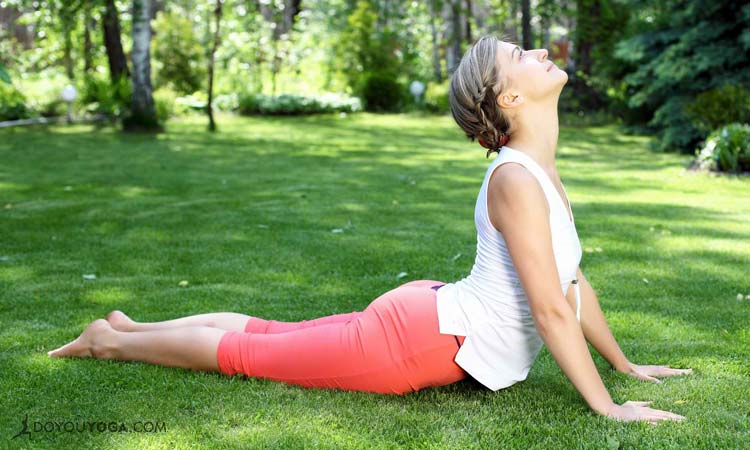Surya Namaskara A, or Sun Salutation, is the basic warmup of Ashtanga yoga. It is usually taught for 5 rounds before the start of the sequence.
As a Power Vinyasa yoga teacher, I always teach a basic Sun Salutation after a brief floor warmup and before the first Vinyasa flow in class. This basic yet powerful sequence warms up the body, lengthens the spine and hamstrings, and begins to connect breath with movement.
I feel it is the fundamental base for ensuring steadiness of breath and mind for the remainder of class. Once the breath-movement sequence is firmly established in Surya Namaskara A, the remainder of the more complex sequences can be performed with ease and control.
Sun Salutation in Ashtanga
Many yoga studios have developed their own variation of this sequence.
I studied at one studio that included a reverse hand clasp from Forward Fold to standing that “wiped the slate clean.” This play on words was popular with the students who felt like they were physically wiping away any stress or hang-ups from the day in order to start fresh.
Another method encouraged touching your forehead to the mat in Chaturanga in a form of prostration in order to encourage humility. Regardless of the variations, the underlying tone of Surya Namaskara A is fluid, meditative movement linked with breath.
Here is the Ashtanga version explained, and I encourage you to incorporate this sequence into your daily practice. It can be done either after seated meditation to honor the day, the self, and the Universe, or before a more vigorous asana practice to calm, center, and steady the mind.
Either way, you will find more control in your balancing postures, power in your arm balances, and prana in your workout with this simple yet powerful practice added into your routine.
- Urdhva Vrksasana: Begin in Mountain (Tadasana). Inhale, arms up.
- Uttanasana A: Exhale, Forward Fold.
- Uttanasana B: Inhale, half lift, Monkey (half-flat back).
- Chaturanga Dandasana: Exhale, plant the hands, jump or walk the feet back, and take the chest towards the floor, elbows tight to the ribs in Four-limbed Staff Pose.
- Urdhva Mukha Svanasana: Inhale, Upward Dog, leading with the heart center.
- Adho Mukha Svanasana: Exhale, Downward Dog. Pause for 3 breaths, first breath exhale out the mouth (Aaahhh).
- Uttanasana B: Inhale, jump to Monkey (half-flat back).
- Uttanasana A: Exhale, Forward Fold.
- Urdhva Vrksasana: Inhale, reverse swan dive, stand tall.
- Samasthitih: Stand in Mountain (Tadasana) with hands in prayer.
Begin again.
Close Your Eyes and Breathe
As you begin to move and breathe here, remember that breath initiates movement. Begin the inhale (or exhale), and then move the body. Make the movements and breath fluid, refraining from the inhale-pause-exhale, or Up Dog-pause-Down Dog phenomenon.
Instead, think “inhale-Up Dog-exhale-Down Dog” and so on. Think of the breath like a wave that rises and falls, rather than starts and stops.
As you advance in your Sun Salutation, try to practice with your eyes closed. Pull the attention inward, focusing on what your body feels like rather than what it looks like. Stretch up a little bit longer, and bend a little bit deeper with every round of the sequence.
Once you have gained confidence and familiarity in your Sun Salutation, remember to smile as you move. Putting a smile on your face triggers the happy center in your brain, and all those endorphins do wonderful things.
Eventually, you will be able to breathe and move with joy and ease in every aspect of your yoga practice, off and on the mat.


